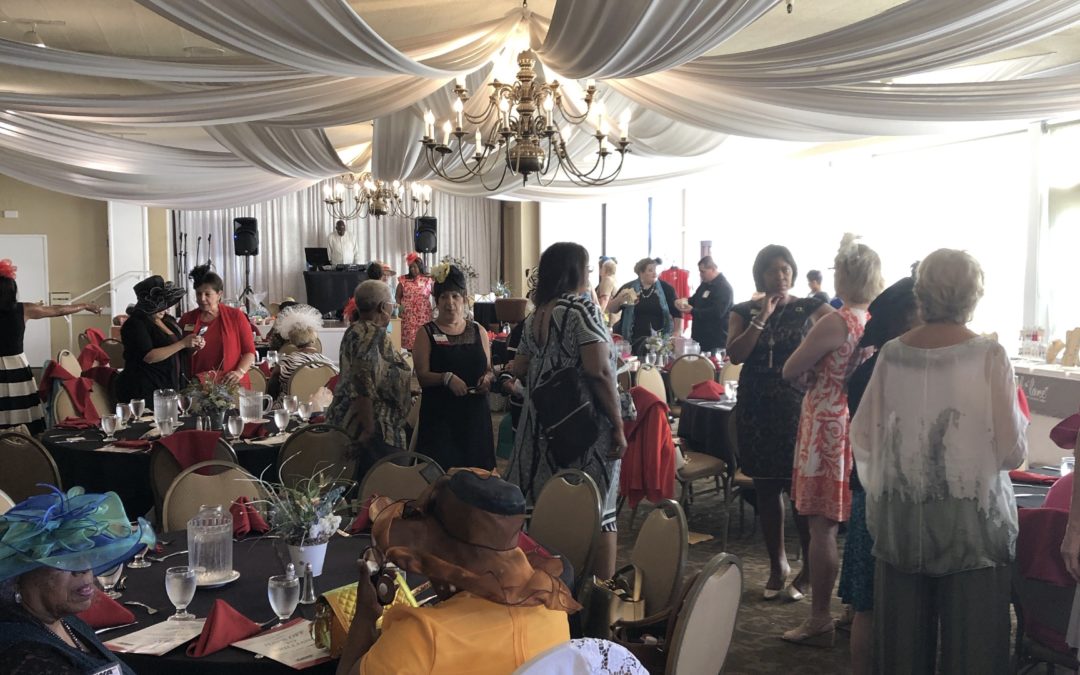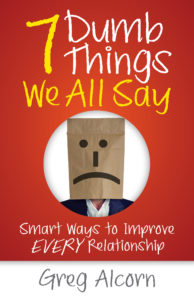
by American Business Women's Association | Feb 7, 2020 | Uncategorized
As Valentine’s Day approaches, love is in the air. But, if you are in a relationship with a co-worker or thinking about starting one, there’s plenty that you can do to avoid embarrassment, hurt or disruption for yourself and your colleagues. What should you know? Angela Civitella is a former executive, certified business leadership coach and founder of Intinde.
She Says There Are Six Things To Consider:
- Check your organization’s HR policy: Many organizations have their own policies on workplace relationships. For example, some companies frown upon one partner managing the other. It’s not that your boss doesn’t want you to be happy, there are larger considerations such as breaches of compliance, conflicts of interest, or inappropriate collusion. The safest option is to ask your HR department if it has a policy in place, and to let your HR Advisor know if you are in a workplace relationship.
- Consider your company’s culture: Even if it’s not written into HR policy, you need to get a feel for your organization’s cultural view on workplace relationships. This is especially important if you are working abroad, or in an organization with a different culture from your own.
- Agree to an approach with your partner: Chances are, your colleagues and co-workers already know that you “have a crush” on the redhead in the sales team or the “hunk” in communications, and they may already suspect that it has blossomed into a relationship. You have to decide with your partner how you’ll behave at work. Do you “come clean” and let your colleagues know what’s going on? Or, do you join the third of workplace couples who decide to keep their relationship a secret? Discuss whether to set some boundaries at work, such as not spending too much time alone together, or agreeing not to use your “pet names” for one another
- Stay professional at work: Your colleagues might approve of your office romance and think you’re the best-matched couple since Romeo and Juliet, but you still need to tread carefully. Indulging in in-jokes, private conversations, and public displays of affection can make your co-workers feel awkward. And if you and your partner are eating lunch together in the staff restaurant, other colleagues may not know whether you want privacy or would welcome the extra company. Why not invite a few more people along? Even if they decline your invitation, you have made the offer. If you discuss business matters together – or, worse still, make business decisions – while your co-workers are absent, it will likely cause resentment. If you’re managing your partner, you need to be especially mindful of your professional interactions, and be seen to be extra careful to treat your other team members equally and fairly.
- Be prepared for gossip! Human beings are social animals, and we connect with one another by sharing stories and experiences. And the more exciting or shocking those stories, the more engaging they become. So, even if you rigorously follow the rules and are careful with your actions, some people may be quick to make assumptions and to see favoritism or nepotism that’s just not there. It’s a kind of fake news.
- Plan for the worst: What if the relationship ends? You have to remain professional if your workplace relationship comes to an end, no matter what the reason. This can be a difficult time for you, your ex-partner, and your colleagues, especially if you still have to work closely together. An acrimonious split can poison the atmosphere in the workplace, and impact productivity and morale. If you manage your ex-partner, make sure that you don’t discriminate against them, or you and your organization risk being the subject of a grievance procedure. Don’t get involved in “muck-raking” or “washing your dirty linen in public,” even if your former partner does.
Written By: Angela Civitella, a former executive, certified business leadership coach and founder of Intinde.

by American Business Women's Association | Jan 10, 2020 | Uncategorized
One of the biggest misconceptions about becoming your own boss is that you have to create a grand business plan in order to be successful. Luckily, that isn’t always the case. There are options to do what you love and provide services that can allow you the freedom of being self-employed. If you love to teach, bake, create, provide child care, get people organized, then you can become your own boss! All you have to do is decide on the service you can provide and make your dream a reality!
Business.org is ready to help American’s ditch the “9 to 5” and become their own boss in 2020. But which dreams are American’s most likely to pursue? It turns out that entrepreneurs who want to go solo (like an entrepreneur but doing it solo), have quite a few options they’re exploring. Using data from Google Trends, we found around 30 frequently searched solopreneur jobs. We then broke those jobs down by state to figure out where, exactly, each solopreneurial venture is most popular. Check out the full report to each state’s results.”
Here are some interesting findings about on the most popular solopreneur jobs nationwide for 2020.
- Surprising absolutely no one, California’s top-ranked solopreneur job is social media influencer
- A little more surprising? “Social media influencer” was also the most-searched term in Illinois and Texas—two lovely
states, of course, but both with a much lower reputation for stardom than La-La Land.
- Estheticians had the most-searched solopreneur job in Hawaii (spa treatments clearly go hand in hand with paradise-
seeking vacationers).
- People in Idaho and Utah seem to need a little extra encouragement; life coaching came in first in both states.
- “Amazon seller” took first place in three states thousands of miles apart: Florida, Nevada, and New Jersey. Obviously,
solopreneurs can follow Amazon’s motto (“Work Hard. Have Fun.”) no matter where in the US they live.
by American Business Women's Association | Jan 10, 2020 | Uncategorized
One of the biggest misconceptions about becoming your own boss is that you have to create a grand business plan in order to be successful. Luckily, that isn’t always the case. There are options to do what you love and provide services that can allow you the freedom of being self-employed. If you love to teach, bake, create, provide child care, get people organized, then you can become your own boss! All you have to do is decide on the service you can provide and make your dream a reality!
Business.org is ready to help American’s ditch the “9 to 5” and become their own boss in 2020. But which dreams are American’s most likely to pursue? It turns out that entrepreneurs who want to go solo (like an entrepreneur but doing it solo), have quite a few options they’re exploring. Using data from Google Trends, we found around 30 frequently searched solopreneur jobs. We then broke those jobs down by state to figure out where, exactly, each solopreneurial venture is most popular. Check out the full report to each state’s results.”
Here are some interesting findings about on the most popular solopreneur jobs nationwide for 2020.
- Surprising absolutely no one, California’s top-ranked solopreneur job is social media influencer
- A little more surprising? “Social media influencer” was also the most-searched term in Illinois and Texas—two lovely
states, of course, but both with a much lower reputation for stardom than La-La Land.
- Estheticians had the most-searched solopreneur job in Hawaii (spa treatments clearly go hand in hand with paradise-
seeking vacationers).
- People in Idaho and Utah seem to need a little extra encouragement; life coaching came in first in both states.
- “Amazon seller” took first place in three states thousands of miles apart: Florida, Nevada, and New Jersey. Obviously,
solopreneurs can follow Amazon’s motto (“Work Hard. Have Fun.”) no matter where in the US they live.

by Rene Street | Nov 12, 2019 | Uncategorized
Organizations have many options when it comes to marketing for Small Business Saturday, which occurs on the first Saturday after Thanksgiving. Small Business Saturday encourages consumers to support local businesses. The event drives attention to local small companies, presenting them with an opportunity to create brand awareness and increase local sales.
Taking advantage of Small Business Saturday requires planning, executing, and financing strategies. Funding your efforts can be done through securing a small business loan. The working capital can be used to hire seasonal staff, purchase extra inventory, or pay for a marketing campaign.
However, marketing isn’t always simple. Here’s what you need to know and how to take advantage of small business’s big day.
Ramp Up Digital Marketing for Small Business Saturday
Brands must work to engage customers through both digital and physical means. This omnichannel experience begins with digital marketing basics. You Should Consider:
Building Relationships on Social Media: Connecting with customers on social media can help you capture additional holiday sales. When marketing for Small Business Saturday, you may want to gradually tease out your plans for the big day. You can use social media to broadcast a special offer or invite customers to an in-store event. Social media is ideal for highlighting how you plan to celebrate Small Business Saturday. When posting on social media, be sure to include the #ShopSmall and #SmallBizSat hashtags.
Using Email Marketing: Email campaigns are an effective way to garner consumer attention and bring awareness to exclusive Small Business Saturday deals. It’s important to go beyond broad, generic messages. Personalization is increasingly vital in standing out in email campaigns. Key Strategies to Employ:
- Take the time to get to know your audience.
- Create copy aimed directly at them.
- Highlight promotions that fit their needs.
- Give them a clear action to take in response to the message.
Fostering Online Reviews: Consumers actively research products and services before committing to a purchase. Consider teaming up with an influencer who has a large following and a fair amount of influence within your area or niche. You can send them product samples in return for an honest review. This will help drive visibility and increase consumer confidence.
Implement Traditional Advertising Programs
Small businesses benefit from the ability to offer localized, personal services. You can leverage your relationship with your community to build trust and increase brand awareness. Traditional advertising campaigns can be ideal for furthering your presence in your community. Key Strategies to Employ:
Getting Involved With Your Local Community: Participating in community service events helps you get to know those around you. And helps them get to know your business. Interacting with potential customers in a community setting shows that you’re interested in relationship building rather than just maximizing sales. You could consider sponsoring a charity or local event. Successful community involvement plans require commitment and a genuine interest in what you’re doing.
Run Ad Campaigns With Local Media: If you want to drive engagement at a local level, you must use channels that are specifically aimed at your local community. Your message can slip into the background on far-reaching media channels, but an ad campaign in a local paper can go a long way in helping people connect with your brand.
Offer Deals and Promotions: It’s critical to recognize the importance of deals and promotions when marketing for Small Business Saturday. Limited time offers, and discounts can persuade customers who are on the fence about your products and services to give them a try.
Prepare Your Systems and Operations
If you’re successful at marketing for Small Business Saturday, then you’ll need to be prepared for an increase in volume and customer interactions. Consider:
Optimizing for Mobile: Consumers do everything from product research to actual purchases via smartphones and tablets. Make sure your website is mobile optimized. If your website is not optimized for mobile, you risk running into problems as you work to increase traffic surrounding Small Business Saturday.
Updating Your Website: Make sure your address and contact info is correct on your website. Additionally, review your site to make sure that promotions are prominently displayed, and your payment process is working properly. Put new product pictures out if your current listings seem dated and ensure copy properly reflects your services. Take time to upgrade and adjust your website before the big event.
Hiring Seasonal Staff: Since Small Business Saturday falls in line with the holiday season, it’s a convenient time to bring in extra staff. Seasonal employees can be used to help launch a new marketing campaign, handle sales, or interact with customers.
Managing Your Inventory: One of the most important considerations for Small Business Saturday is that you have plenty of goods to sell. A boost in sales won’t matter if you don’t have inventory available to meet customer needs. Take some time to analyze your supplies and ensure you’re ready for the increase in demand.
By participating in Small Business Saturday, local businesses receive quite a few perks including community support, great local marketing opportunities, and the high potential to reach new customers. Utilize the above marketing strategies to better prepare for Small Business Saturday and take advantage of the shopping frenzy.
 Ben Gold is president of QuickBridge, a privately-held financial services firm providing “small business loans” and short-term working capital funding solutions for small-to medium-sized businesses nationwide. Based on its growth, QuickBridge has ranked two consecutive years on the Inc. 500 Fastest Growing American Companies list. Ben is a thought leader in the financial tech. industry and a contributing member of the Forbes Finance Council.
Ben Gold is president of QuickBridge, a privately-held financial services firm providing “small business loans” and short-term working capital funding solutions for small-to medium-sized businesses nationwide. Based on its growth, QuickBridge has ranked two consecutive years on the Inc. 500 Fastest Growing American Companies list. Ben is a thought leader in the financial tech. industry and a contributing member of the Forbes Finance Council.

by windsong | Sep 1, 2019 | Uncategorized
Last weekend the ABWA Council of Southern California hosted their annual “Hats Off” event. I was a brand new member at the time of this event last year and I was unable to attend. I had no idea what to expect at this year’s “Hats Off To Brilliance”, I thought possibly just a luncheon with the opportunity to meet woman from some of the other Southern California chapters. But it was so much more. Sure we got a lovely lunch from the Lakewood Country Club but that was just a tiny part of this wonderful event.
At the start of the program we were introduced to the the National Board and a few special guests. The presentation for the Councilwoman of the Year, of which our very own Susan McCormick was nominated, was presented by last year’s winner Cecile Harris Walters. The 2019 Councilwoman of the Year was awarded to Melissa McCaughey.
Although most of the event is for award presentations, speakers and a candidates forum, in the midst of all that was a little bit of entertainment. The DJ started off with some impressive and soulful singing. But what came next was probably the highlight of the day. He called on six unsuspecting woman to come on stage to lip-sync, in the first of three hilarious and spirited performances. To be quite truthful I was in my seat trying to come up with a legitimate excuse to get out of it if they called on me, yet all the woman that got called on seemed to jump at the chance to get on stage and perform. They were so fun to watch and had all of us laughing and cheering at their spontaneous choreography and moves.
After a short break to enjoy a delicious lunch we got back to the program with the guest speaker, ABWA Woman of the Year, Latorie Lloyd Walker. She gave an incredible speech and I’m awe of what she has accomplished and how becoming a member has really helped give her the tools and strength to succeed. One of the things I constantly hear from members, and I can totally relate to, is how upon joining ABWA they were immediately roped into a board position, having no idea what they were getting themselves into. In fact, I learned a new favorite term at “Hats Off” from one of the speakers, “voluntold”. How many members can relate to the fact that you didn’t so much volunteer, you were voluntold? But it’s these experiences that bring us out of our ruts and our shells and help make us better, more well-rounded and successful woman.
The next part of the program was hosted by none other then the amazing Arnedra Jordan, a 2019 ABWA Top Ten. Arnedra is so incredibly inspiring, when I hear her list of accomplishments, I often wonder when she has time to sleep. Arnedra called up the candidates running for offices this year. Each candidate had to pull questions randomly from an envelope and answer them on the spot, with no knowledge of the questions ahead of time. They all gave very thoughtful and thorough answers, many of which really helped spark thoughts in my head of ways to improve the Wind Song Chapter.
The event wrapped up with the Hats of the Day Parade. All the woman wearing hats parade around the room and one person is awarded with best hat. Finally there are some closing remarks from Chris Linowski and winners were drawn for the opportunity and 50/50 drawings.
It was an informative, fun and inspirational day. I look forward to attending next year’s event. Who knows maybe I’ll even wear a hat?

by American Business Women's Association | Jul 17, 2019 | Uncategorized
 Have you ever said something at work you wish you hadn’t? Sometimes the wrong words just blurt out to employees or with the client. The first step in fixing common communication blunders on the job is to know what those blunders are. Then you can say something the smart way and not the dumb way. Verbal communication expert, Greg Alcorn, CEO of Global Contact Services (GCS) of Salisbury, NC, is the author of 7 Dumb Things We All Say and speaks to thousands of people each year on improving verbal communication at work.
Have you ever said something at work you wish you hadn’t? Sometimes the wrong words just blurt out to employees or with the client. The first step in fixing common communication blunders on the job is to know what those blunders are. Then you can say something the smart way and not the dumb way. Verbal communication expert, Greg Alcorn, CEO of Global Contact Services (GCS) of Salisbury, NC, is the author of 7 Dumb Things We All Say and speaks to thousands of people each year on improving verbal communication at work.
BELOW, GREG HAS LISTED THE SEVEN BIGGEST BLUNDERS YOU MAY NOT HAVE USED, BUT HAVE DEFINITELY COME ACROSS!
ONE: Using Bad Bookends. The biggest blunder is starting and ending what you say with the wrong phrasing. Conversation bookends are the small comments or questions just before or right after a full statement or request for action. Be better with your starting and ending bookends. Pre-sentence bookends as a tool can be engaging, demeaning, or distracting. Names are great bookends. Starting a sentence with the name of the person you are talking to warms that person up. “Mary, may I put you on hold?” Saying your name last in your introduction makes it easy for the person you are talking with remember your name. “This is the help line; my name is Jack.”
TWO: Starting with Wrong First Words. Are you familiar with the adage, “Getting off on the wrong foot”? Conversations have first impressions, and they begin with your first three words. Hint: one of the words should be the other person’s name. Using names is important when speaking on the phone, especially conference calls. Conference call principle number one is if you’re going to call on somebody, start with the name. Instead of saying, “What were the metrics on our operations yesterday, Frank?” ask the right way: “Frank, what were the metrics on our operation yesterday?” If you don’t start with the name, you might catch the person by surprise. It certainly catches people’s attention when you say their name first.
THREE: Not Choosing Your Words Well. The words you choose paint a picture for the listener. Your words express your attitude and your personality. Keep it positive. Don’t start a sentence with the word “no.” Even in introductions, you can’t go wrong with saying the person’s name first. A person’s name followed by the four words “I need your help” is a winner. “Rachel, I need your help.” This is especially powerful when it’s in a situation in which you might be the boss and the other person might be a manager, or you might be in a perceived superior position.
FOUR: Poor Questions and Bad Listening. Meaningful questions always stay on subject, keep a conversation moving forward, and ensure the other person feels heard and understood. Becoming a better listener is easier than you might think. It starts by committing to be a great listener and making an active choice to listen. Ask good questions and really listen. This is the “You have two ears and one mouth” principle.
FIVE: Focus-on-Me Attitude. Making it all about you is a turn off for them. This is not a technique; this is an attitude. The best way to describe a benefit is to describe the feeling received. “I came by as soon as I heard you lost the sale; I’m sad.” The fellow employee can recognize the extra effort and surely appreciates the sentiment. It’s a powerful sentence. A special visit, a sense of urgency, and a sincere feeling (sad). Empathy shows feelings.
SIX: Wrong Tone. People feel more comfortable with pleasant, variable tone quality. Voice tone is made up of rate, pitch, and volume. Think tone and don’t drone. The tone of our voice helps others to hear our empathy. The rate, pitch, and volume of our statements of empathy helps express feelings. Usually, but not always, we hear implied empathy when somebody slows down speech and lowers the pitch and volume. Say, “I am sad to hear that you lost the supermarket account,” and I’ll bet you will automatically say it slow and low. The same with excitement at the opposite end of the spectrum. Say “Team, we won the hotel account!” You can’t help but say it fast, high, and loud. Tone expresses empathy.
SEVEN: Not Diffusing Difficult Drama. Stressful conversations, or drama, can be avoided by mastering word selection, listening, and questioning skills. Drama can be inevitable, however. Most stressful situations can be defused when you apply the three Rs: recognize, restate, and reassure. Ask others: “What would you like to see happen?” Those are seven magic words that can defuse difficult drama: Words are just a tool, like electricity is a tool. And like any tool, they can be used for helping or for harming. Electricity can cook a person’s dinner, or it can burn a person’s dinner. Words can turn people on or turn people off.
Here is the bottom line: Nobody wants to say dumb things. But we all do. The first step towards reducing the number of dumb things you say is to know what the dumb things are. Then don’t say that, say something smarter.




 Ben Gold is president of QuickBridge, a privately-held financial services firm providing “small business loans” and short-term working capital funding solutions for small-to medium-sized businesses nationwide. Based on its growth, QuickBridge has ranked two consecutive years on the Inc. 500 Fastest Growing American Companies list. Ben is a thought leader in the financial tech. industry and a contributing member of the Forbes Finance Council.
Ben Gold is president of QuickBridge, a privately-held financial services firm providing “small business loans” and short-term working capital funding solutions for small-to medium-sized businesses nationwide. Based on its growth, QuickBridge has ranked two consecutive years on the Inc. 500 Fastest Growing American Companies list. Ben is a thought leader in the financial tech. industry and a contributing member of the Forbes Finance Council.





